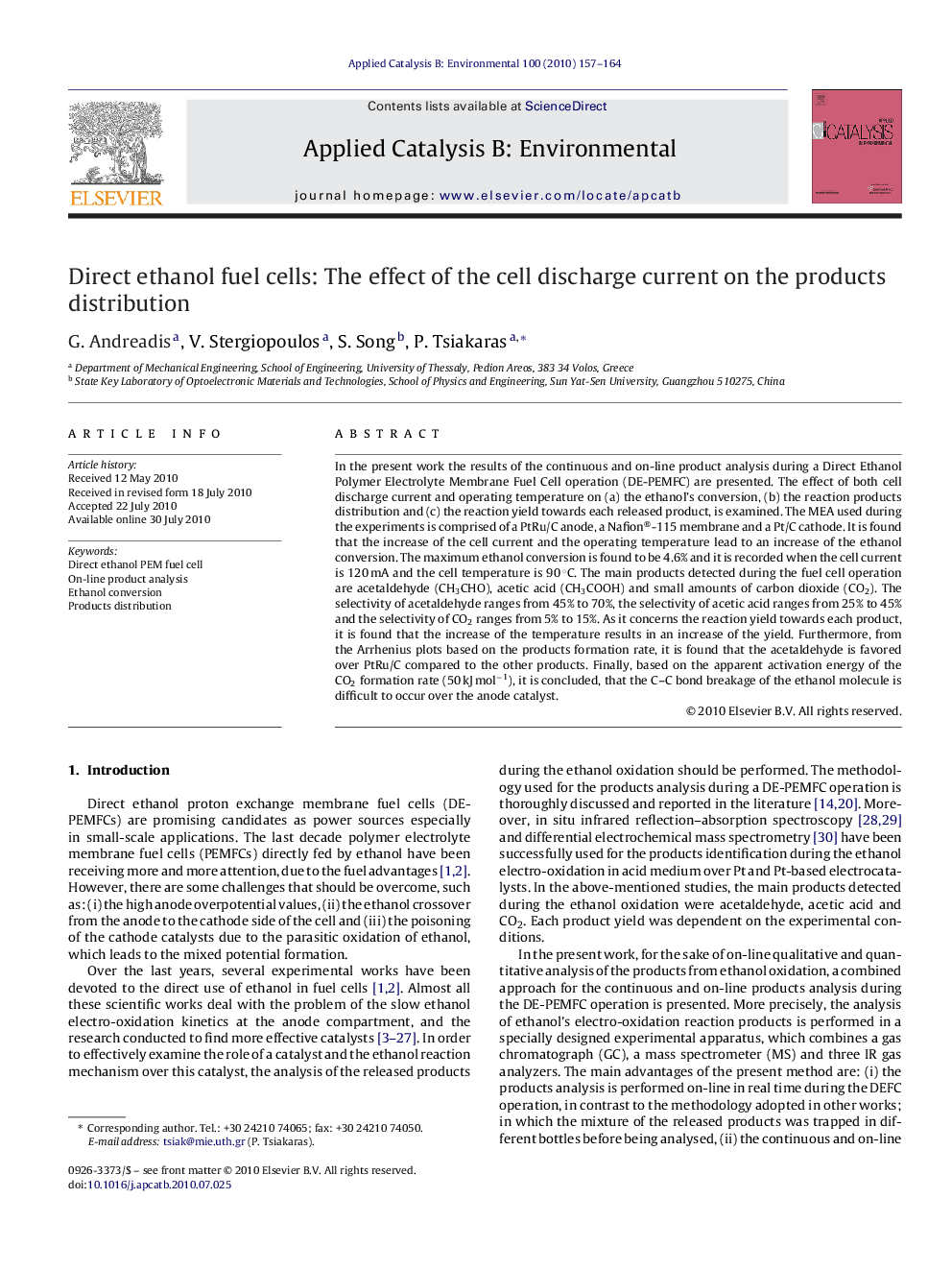| کد مقاله | کد نشریه | سال انتشار | مقاله انگلیسی | نسخه تمام متن |
|---|---|---|---|---|
| 47154 | 46462 | 2010 | 8 صفحه PDF | دانلود رایگان |

In the present work the results of the continuous and on-line product analysis during a Direct Ethanol Polymer Electrolyte Membrane Fuel Cell operation (DE-PEMFC) are presented. The effect of both cell discharge current and operating temperature on (a) the ethanol's conversion, (b) the reaction products distribution and (c) the reaction yield towards each released product, is examined. The MEA used during the experiments is comprised of a PtRu/C anode, a Nafion®-115 membrane and a Pt/C cathode. It is found that the increase of the cell current and the operating temperature lead to an increase of the ethanol conversion. The maximum ethanol conversion is found to be 4.6% and it is recorded when the cell current is 120 mA and the cell temperature is 90 °C. The main products detected during the fuel cell operation are acetaldehyde (CH3CHO), acetic acid (CH3COOH) and small amounts of carbon dioxide (CO2). The selectivity of acetaldehyde ranges from 45% to 70%, the selectivity of acetic acid ranges from 25% to 45% and the selectivity of CO2 ranges from 5% to 15%. As it concerns the reaction yield towards each product, it is found that the increase of the temperature results in an increase of the yield. Furthermore, from the Arrhenius plots based on the products formation rate, it is found that the acetaldehyde is favored over PtRu/C compared to the other products. Finally, based on the apparent activation energy of the CO2 formation rate (50 kJ mol−1), it is concluded, that the C–C bond breakage of the ethanol molecule is difficult to occur over the anode catalyst.
.Figure optionsDownload as PowerPoint slideResearch highlights▶ On-line qualitative and quantitative product analysis during a DE-PEMFC operation. ▶ Study of the effect of the cell current and the operating temperature on the ethanol conversion, the products’ selectivity and yield. ▶ The maximum ethanol conversion is equal to 4.6% when the cell current is 120 mA at 90 °C. ▶ The increase of the temperature results in the increase of the acetaldehyde selectivity and the decrease of the acetic acid selectivity at a constant operating current. ▶ The maximum reaction yield towards acetaldehyde and acetic acid is 2.6% and 1.7%, respectively, at 90 °C and 120 mA.
Journal: Applied Catalysis B: Environmental - Volume 100, Issues 1–2, 11 October 2010, Pages 157–164